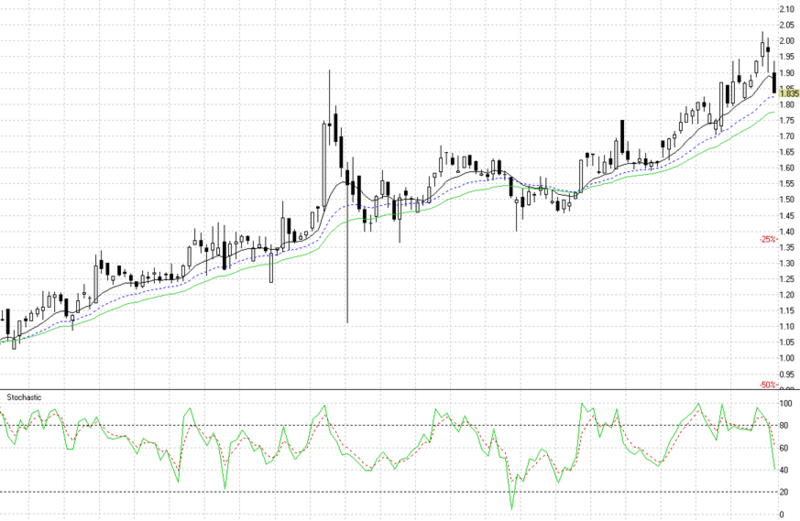What is a liquidity crisis, and what does it mean for crypto investors?

Large lenders in the repo market include money market mutual funds and hedge funds. The repo market performs for these large institutions the same function that commercial banks perform for smaller depositors. In effect, it allows them to pool their cash, collectively economizing on their stocks of non-interest-bearing assets. For lenders, the repo market is attractive because the loans are very short term, so it is a way to earn a return—albeit modest—on cash reserves that would otherwise be idle. In normal times, any lender can withdraw cash by declining to roll over earlier loans.
Suppose for now that these investments are Treasury bills or high-grade commercial paper, so there is little risk and the bank can quickly convert the assets into cash if its own stock runs low. The return on these investments finances the interest paid to depositors, and in a competitive banking system, all of the return (net of the bank’s operating cost) is used in this way. We can think of such a bank as an institution that pools payment risks, making all of its clients better off than they would be acting on their own. The effects of rising rates on bank securities books are once again widely appreciated. The effects on loan portfolios have gotten less attention but that may simply be a question of timing. Commercial real estate is the dominant class of collateral in many bank loan portfolios, and while those loans don’t get marked to market like (AFS) securities, the sharp rise in rates still has a meaningful impact.
Liquidity Crisis: A Deeper Dive
I think that if you haven’t had experiences like that within your professional career, you may leave yourself open to big issues like this,” Lugay said. Click on the TX hash and scroll down to the area where the liquidity pool tokens have been transferred to the developer’s wallet. Check the transfer section to ensure the holdings have been moved to the burn address and are zero. The most important thing is to research and verify the tokens before investing. To do this, find the token’s contract and look for the page with liquidity addition information.

Don’t be afraid to send customers invoices earlier and more regularly than usual. While any new rules likely would take a while to be adopted, many banks, including those with below $50 billion in assets, could see new regulatory focus on their liquidity sources and deposit makeup. Regulators and bankers could view investments in their bond portfolio differently after the shakeout that occurred in early spring 2023 and might place greater importance on shorter-term, liquid investments.
What is a liquidity crisis?
It describes an economy in terms of the production and consumption of a real good, but to apply their model to actual banking practice, it is helpful to give it a monetary interpretation. He even argues that when an institution liquidity crunch meaning wants to exit during a liquidity crunch, institutions can avoid some of the typical price slippage that occurs on exchanges. They achieve this efficiency through smart order routers and specific algorithmic order types.
Many experts believe that we are currently experiencing a crypto liquidity crisis due in part to the increasing popularity of cryptocurrency and blockchain technology. If you’re considering investing in a particular cryptocurrency, it’s a good idea to do your research first to determine whether or not there is a liquidity crisis occurring in that market. This can help you avoid investing when prices are particularly high and hope for even better returns later on. High levels of trading volume indicate that there is a high level of interest and demand for a particular asset, thus increasing liquidity. As more investors enter the market, prices may rise due to higher buying pressure.
Liquidity Crisis Looms: What Businesses Can Do Now
This makes it hard for investors to assess the risk-reward ratio of any investment they make, making it more difficult to plan their portfolio strategies. While these are just some of the factors contributing to liquidity issues in the crypto industry, there are steps that market participants can take to help minimize their effects. For example, exchanges and businesses can continue to advocate for increased regulation and greater institutional investment, which can help stabilize crypto markets and reduce the risk of market manipulation. Significantly higher interest rates and a crisis of confidence at a handful of institutions have put US banks’ liquidity in the crosshairs and will lead to pressure on net interest margins. At the same time, economic uncertainty due to persistently high inflation, notable increases in rates and recent turmoil in the markets should cause banks to build reserves for loan losses in 2023. Taken together, margin compression and increased credit costs will take a bite out of bank earnings in 2023.
- If the pressure of deposit withdrawal is not reduced, the liquidity crisis in banks will increase, he said.
- Due to insufficient regulations, certain players in the space can use tactics like wash trading or price-manipulating algorithms to artificially inflate or deflate prices.
- Many investors hold their assets on these exchanges since they offer different interest rates or high yields.
- Several banks were unable to maintain the required CRR in November and December last.
- Deposit insurance through the Federal Deposit Insurance Corporation (FDIC) was effective in eliminating the incentive for depositors to withdraw funds.
- Additionally, even minor liquidity risks can lead to more substantial consequences over time as the value of an asset continues to drop.
Therefore, crypto investors should be prepared for a possible liquidity crisis coming in 2023. The steps that are required to be taken will depend on the jurisdiction of the relevant guarantor and the governing law of the existing security documents. Depending on the extent of the existing guarantee and security package, including the number of jurisdictions involved, these steps may be time consuming and costly.
What are the risks of investing in crypto during a liquidity crisis?
Thus asset holders may be forced to sell their assets at a price below the long term fundamental price. Borrowers typically face higher loan costs and collateral requirements, compared to periods of ample liquidity, and unsecured debt is nearly impossible to obtain. Typically, during a liquidity crisis, the interbank lending market does not function smoothly either. A liquidity crisis can develop when multiple financial institutions experience a liquidity shortage and start to draw down their self-financed reserves, seek short-term financing from credit markets or sell assets to create cash.
Daily Update: August 8, 2023 – S&P Global
Daily Update: August 8, 2023.
Posted: Tue, 08 Aug 2023 15:26:40 GMT [source]
The interest rate on long-term government bonds shot up to 8.95% in the last auction called by the Bangladesh Bank on 28 December – at a time when the lending rate cap was 9%. Basically, the central bank provides the government with loans against treasury bills and bonds. These bonds with a tenure of 1-20 years are being purchased by the central bank itself. The interbank lending rate jumped past the official rate on several occasions in the last one and a half months as some banks desperately needed cash to stay afloat. They borrowed from other banks for one day at 6.8% interest rate on average or for two weeks at over 10%. 1 There is a long tradition of careful historical study of financial crises.
Due to these reasons, customers are withdrawing deposits at a greater propensity, which has triggered the liquidity crisis. They continued to say that already, banks do not want to lend to their weak peers. In such a situation, capping the lending rate will make banks fully stop lending. But while collateral reduces the likelihood of a successful run, it does not eliminate it altogether.
Regional Economic Indicators
Due to insufficient regulations, certain players in the space can use tactics like wash trading or price-manipulating algorithms to artificially inflate or deflate prices. This can create pricing volatility and uncertainty and make it difficult for individuals and institutions alike to assess the true value of cryptocurrencies. Cryptocurrencies are traded on exchanges and rely on liquidity to be able to move money around quickly. This makes them especially susceptible to liquidity crises since they can change so rapidly in value. To mitigate against this, many crypto exchanges require a certain amount of money to be held in reserve, known as a liquidity margin, to keep the exchange operational even during periods of high demand. Several factors can influence liquidity in the cryptocurrency space, including technological issues and regulatory uncertainty.
Exclusive: Chinese cities tighten property firms’ access to escrow funds – Reuters
Exclusive: Chinese cities tighten property firms’ access to escrow funds.
Posted: Wed, 02 Aug 2023 09:06:00 GMT [source]
A crypto liquidity crisis is a period in which the demand for a particular cryptocurrency increases at a rate significantly faster than the supply. This can cause significant price spikes, as well as other effects on the market. As more and more people become interested in cryptocurrencies, it’s only natural that some will believe in certain coins over others. When the demand for a particular coin is large enough, it can cause the price of that coin to rise dramatically.
You may need to explore other avenues for shoring up liquidity in a liquidity crisis. In a time of crisis, federal governments often offer special programs and favorable terms through quantitative easing. If not, borrowing more money will leave you in an even worse position down the road.
By announcing a credible policy, the Fed can affect those beliefs, and the Fed needs to use this tool. Whatever their sources, these contagion effects are exactly what is systemic about bank failures. Any one bank, no matter how large and respected, can go out of business almost without a ripple.

Chuck explains that institutions choose sFOX over individual exchanges because it does not limit order book access to one or two specific liquidity providers. Instead, sFOX has bundled and aggregated over 30 liquidity providers on one platform. Since there is always a large pool of potential buyers and sellers, you can rest assured that you will receive a reasonable offer for your items. A negative shock to economic expectations might drive the deposit holders with a bank or banks to make sudden, large withdrawals, if not their entire accounts. This may be due to concerns about the stability of the specific institution or broader economic influences.
To break down the mechanics of a crypto-liquidity crunch, we sat down with an institutional market expert, Chuck Lugay, head of execution services at sFOX. SFOX is known by institutional investors for its deep order books — sourced from more than 30 top exchanges, OTCs and over 80 markets. Lugay brings more than 20 years of institutional experience and has lived through the significant market swings in the last two decades. Liquidity problems arise when liquidity sources are depleted or come to a halt.




